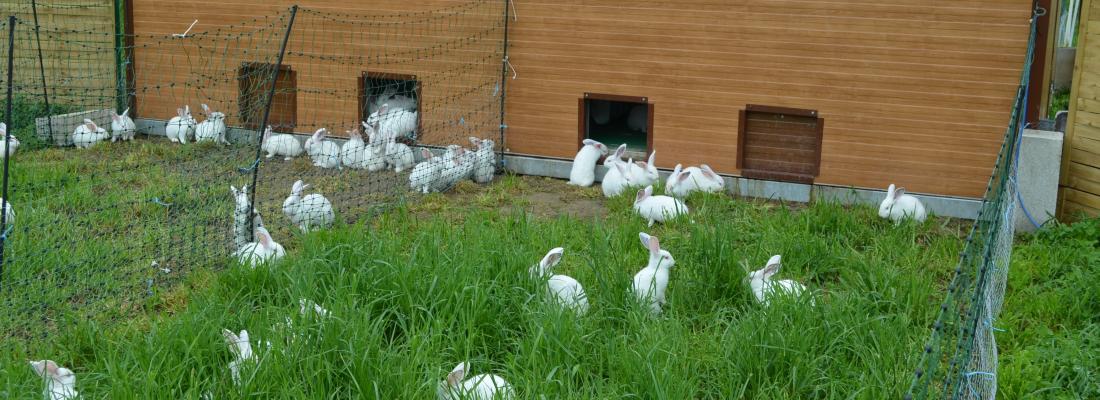Agroecology Reading time 7 min
Rabbits on pasture: finding a compromise between performances
Published on 15 February 2022

In a context of evolving concern over housing conditions of farmed rabbits, we developed a housing system that allows access to an outdoor area.
The aim was to study the health status, growth and behaviour of rabbits raised at two stocking densities with access to a paddock, or not. We distributed 299 weaned rabbits in four groups (YH: 100, NH: 99, YL: 50 and NL: 50) using a 2x2 factorial design including access (Y: yes) or not (N: not) to a 23 m2 paddock and the indoor stocking density (H, high: 17 or L, low: 9 rabbits/ m2). We measured the growth and health status of each animal weekly for 42 days (from 31 to 73 days of age) and performed reactivity tests to a new environment, a human and new object. We also assessed the rabbits’ behaviour at days 26 and 40 by doing a visual scan of each animal at regular time intervals.
Our results showed that stocking density had no effect on mortality, but mortality tended to increase with outdoor access from 3.0% to 7.0% (P < 0.10). Although the stocking density had no effect on average daily gain, it was higher in rabbits in the N group than in the Y group (+3.6 g/day; P < 0.05). Rabbits entered the paddocks for the first time in less time at the beginning of the trial (50 s at day 3 vs 10 min at day 31; P < 0.001). The proportion of rabbits outside after 20 min of the new environment test was higher among rabbits in the L group than in the H group (+24% points at day 3 and +11% points at day 20; P < 0.001). Regardless of the stocking density, more rabbits in the N group touched the experimenter’s hand (16% vs 27%; P < 0.05) and the new object (34% vs 20%; P < 0.05) than rabbits in the Y group. Inactivity was more frequent in rabbits inside the pens than in the paddocks (70.0% vs 34.2% at days 26 and 40; P < 0.05). Locomotion was more frequent in the paddocks than in the indoor pens (20.0% vs 7.2% at days 26 and 40; P < 0.05). The stocking density did not affect the behavioural traits measured.
In conclusion, providing rabbits access to a paddock could allow them to fulfil some natural behaviours but slightly reduced their growth.
Fetiveau, M.; Savietto, D.; Gidenne, T.; Pujol, S.; Aymard, P.; Fortun-Lamothe, L., 2021. Effect of access to outdoor grazing and stocking density on space and pasture use, behaviour, reactivity, and growth traits of weaned rabbits. Animal, 15 (9) : 11. http://dx.doi.org/10.1016/j.animal.2021.100334
